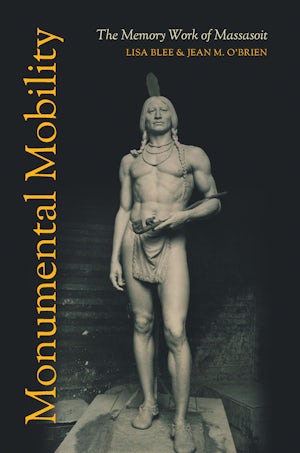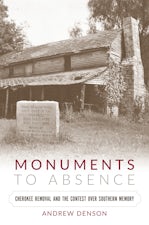Monumental Mobility
The Memory Work of Massasoit
By Lisa Blee, Jean M. O'Brien
288 pp., 6.125 x 9.25, 50 halftones, notes, bibl., index
-
Paperback ISBN: 978-1-4696-4840-8
Published: March 2019 -
E-book PDF ISBN: 979-8-8908-5552-7
Published: February 2019 -
Hardcover ISBN: 978-1-4696-4839-2
Published: March 2019 -
E-book EPUB ISBN: 978-1-4696-4841-5
Published: February 2019
Buy this Book
- Paperback $32.50
- Hardcover $99.00
- E-Book $22.99
For Professors:
Free E-Exam Copies
Awards & distinctions
2019-2020 Winthrop Prize, The Colonial Society of Massachusetts
2020 Honorable Mention, National Council on Public History Book Award
As Lisa Blee and Jean M. O’Brien show in this thought-provoking book, the surprising story of this monumental statue reveals much about the process of creating, commodifying, and reinforcing the historical memory of Indigenous people. Dallin's statue, set alongside the historical memory of the actual Massasoit and his mythic collaboration with the Pilgrims, shows otherwise hidden dimensions of American memorial culture: an elasticity of historical imagination, a tight-knit relationship between consumption and commemoration, and the twin impulses to sanitize and grapple with the meaning of settler-colonialism.
About the Authors
Lisa Blee is associate professor of history at Wake Forest University.
For more information about Lisa Blee, visit
the
Author
Page.
Jean M. O'Brien (White Earth Ojibwe) is the Distinguished McKnight University Professor of History at the University of Minnesota.
For more information about Jean M. O'Brien, visit
the
Author
Page.
Reviews
“The book documents the fascinating continental ‘travels’ of a statue of the Wampanoag leader Massasoit, installed in 1921 at Plymouth, Ma., to commemorate the 300th anniversary of the Pilgrims’ arrival . . . This is an object lesson in the commodification of Native American memory.” —Choice Reviews
“A welcome addition to the historiography of memory and a growing list of books focused on Indigenous monuments. Moreover, the authors’ extensive work tracing the many lives of Massasoit exhibits how difficult it is to fix the meaning of an object even after it is rendered in stone.” —Western Historical Quarterly
“Art historians will find Monumental Mobility fascinating and rich in material for teaching courses on the ethics of museum practices and art reproduction, while public historians will find Blee and O’Brien’s arguments solidly grounded in interpretive theory. . . a worthwhile read for both academics and the interested public—thanks to the indefatigable research conducted by Blee and O’Brien.” —Journal of Early American History
"This engaging book draws readers into a fascinating story that will help them make sense of collective narratives regarding nature, nationalism, 'Indians,' and the role of monuments. It is a truly enjoyable read, a book that provokes curiosity and a desire to unpack and understand." —Lisa Brooks, Amherst College
"Blee and O'Brien take up important issues like the relationship of public art and public history with the history and visibility of Indigeneity in American public spaces. Ultimately, they reveal that Massasoit cannot, in fact, be owned or controlled. He can be found in sculptural form all over the country, but his historical meaning is much more unstable. This is what America's foundational history and memory is really all about." —Erika Doss, University of Notre Dame
Multimedia & Links
Listen
Blee and O'Brien talk to Ryan Tripp for the New Books Network podcast. (05/22/2019, running time 1:28:44)




